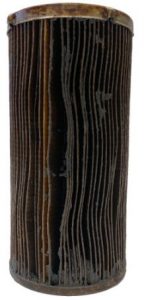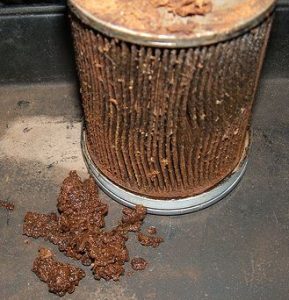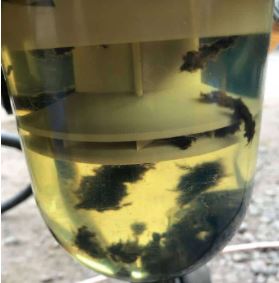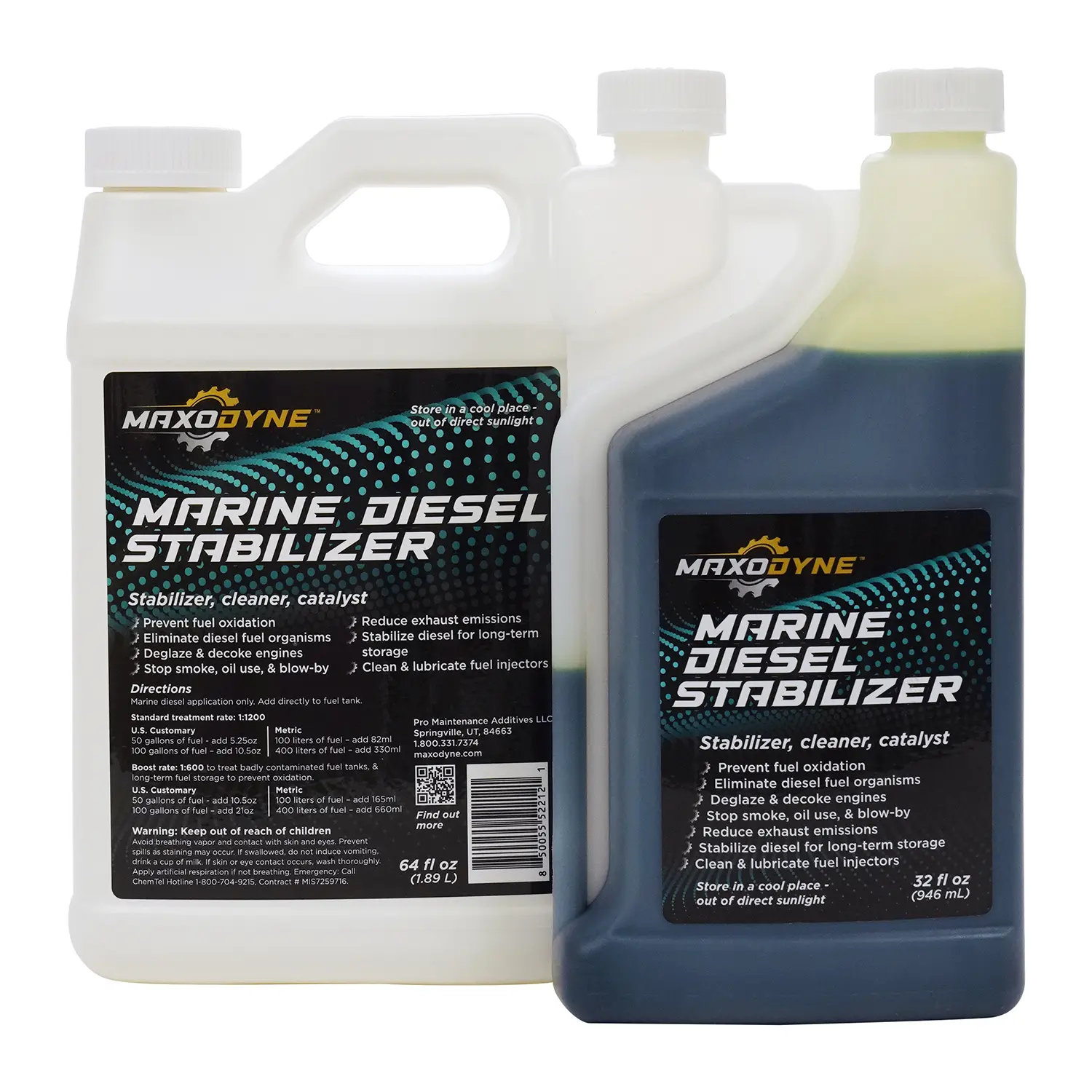What causes many unnecessary marine diesel engine breakdowns?
 One of the main marine-diesel engine breakdown issues is blocked and contaminated fuel systems. The modern ULSD (Ultra-Low Sulfur Diesel) diesel fuel is clearly formulated differently to the blends we were all used to several years ago, and unfortunately, for the typical boat owner, it comes with some problems. These problems include water, mold and bacteria growth being increasingly found in the fuel tank.
One of the main marine-diesel engine breakdown issues is blocked and contaminated fuel systems. The modern ULSD (Ultra-Low Sulfur Diesel) diesel fuel is clearly formulated differently to the blends we were all used to several years ago, and unfortunately, for the typical boat owner, it comes with some problems. These problems include water, mold and bacteria growth being increasingly found in the fuel tank.
It’s been found that a large percentage of the repairs in the leisure-marine category are due to blockage of the injectors by these contaminants, which cannot be dealt with by the inline fuel filters.
It has also been found that the smallest amount of water in the tank will quickly encourage bacteria growth, and become a problem in the tank and motor, and this is also a major risk for the injection pump.
Where does the water in diesel come from?
One way is condensation. Condensation can be a big problem for diesel boat owners. Unlike gasoline engines, there is no vapor pressure to curb condensation on diesel-engined boats. When the tank cools, humid air draws back into the tank and water condenses on the tank walls.
 When condensation takes hold, the water in the system can cause all sorts of problems – including rust and corrosion, particulate damage or even diesel bug.
When condensation takes hold, the water in the system can cause all sorts of problems – including rust and corrosion, particulate damage or even diesel bug.
Other ways water can enter the fuel tank is a leaking filler cap, a badly installed vent tube, or splash from typical marine surroundings.
Whichever way it happens, water in a marine diesel fuel tank can be disastrous.
In diesel fuel, water build-up promotes oxidation and fuel breakdown. And since diesel fuels tend to be stored longer, bacterial and fungal growth often happens when water is present. Once bacteria and other microbes establish a foothold, they are impossible to get rid of without a biocide, and can easily lead to further diesel problems including fuel quality breakdown, corrosion of tanks, deposit build-up and nasty filter blocking problems.
What about biodiesel?
Biodiesel may have environmental advantages but due to its higher water content, it is more vulnerable to fuel contamination than petrochemical diesel. Not only does it contain more water when it leaves the refinery, but because it is hygroscopic it can also attract even more water if stored badly. When stored, biodiesel also suffers from particulate contamination even more so than petrochemical diesel. Rust, dirt, wax, sand, clay, asphaltenes, microbial growth all reduce the fuel quality.
Boat diesel fuel bug contamination not only has the potential to be dangerous, starving your boat engine of fuel just when you need it most, but also a frustrating waste of both time and money, wrecking engines and corroding fuel tanks for both boat and yacht owners. Unfortunately with the introduction of biodiesel, which provides the ideal environment for the germination and reproduction of diesel bug, it is becoming an increasing problem.
What is this bug and why is diesel contamination on the increase?
 ‘Diesel Bug’ is the term commonly used for a number of contaminants that include microbial bacteria, fungi and algae found in diesel. They emerge from the air or moisture, or during tank filling, and can lie dormant in boat fuel tanks and boat fuel systems. When as little as a droplet of water is introduced, and the temperature is right (40 – 160°F, 5-70o C), the microbes germinate and begin to reproduce, feeding on the nutrients and hydrocarbons that bio-fuels contain. Before dying, the microbes produce waste deposits which descend to the bottom of the boat fuel tank, and due to their rapid reproduction the build up of dead microbes and waste is often considerable.
‘Diesel Bug’ is the term commonly used for a number of contaminants that include microbial bacteria, fungi and algae found in diesel. They emerge from the air or moisture, or during tank filling, and can lie dormant in boat fuel tanks and boat fuel systems. When as little as a droplet of water is introduced, and the temperature is right (40 – 160°F, 5-70o C), the microbes germinate and begin to reproduce, feeding on the nutrients and hydrocarbons that bio-fuels contain. Before dying, the microbes produce waste deposits which descend to the bottom of the boat fuel tank, and due to their rapid reproduction the build up of dead microbes and waste is often considerable.
When dead diesel bugs, sludge or water is sucked into the boat fuel lines, the resulting filter and injector blockages can cause engine failure and an extended and dirty tank cleaning exercise, with the added annoyance and expense of lost contaminated fuel inside the tank. Additionally, corrosion can occur wherever the microbe waste settles, resulting in expensive replacement of the boat fuel pumps and injectors. Once contaminated diesel has entered the boat fuel system it can be difficult to eradicate.
What can be done to prevent or stop this problem?
The best form of prevention that can be implemented to safeguard against these extremely dangerous, potentially disastrous organisms is a two-fold action –
- Remove their source of life – water. When there is no water in the tank, diesel organisms cannot survive. Easier said than done – it is impossible to stop water entering a fuel tank as condensation will always be a problem. And all too often, water craft fuel tanks suffer from water entry through the filler, even when all precautions are taken.
- Eradicate the organisms already present as quickly and effectively as possible. This is done by introducing Marine Diesel Stabilizer into the diesel. Marine Diesel Stabilizer is remarkably effective as a biocide and dispersant. It KILLS diesel organisms outright, and also brings any water in the diesel into suspension, which destroys the organisms habitat. The suspended water in the fuel is carried through the combustion process and safely exhausted. Because it contains a very effective biocide which kills diesel organisms as soon as they emerge, the reproduction of these harmful organisms is blocked.
What else does Marine Diesel Stabilizer do?
Marine Diesel Stabilizer is an extremely effective marine diesel fuel treatment that overcomes many engine operating problems –
Excellent diesel fuel system and injector cleaner –
- it cleans blocked injectors caused by contaminants in the fuel. Blocked injectors create incorrect spray patterns which often create a host of problems including loss of engine power, poor performance, rough running, excessive diesel smoke, and excessive fuel consumption.
- it frees up injectors that have seized due to lack of lubrication caused by Ultra Low Sulfur Diesel fuel. Seized injectors produce over-fuelling which creates detonation inside the combustion chamber, which, if not corrected, will result in melted pistons!
- it cleans fuel pump and injector deposits, and disperses contaminants as they form. This highly concentrated product is proven to clean the entire fuel system, restore power and economy, boost diesel fuel lubrication properties, and provide exceptional anti-rust protection to fuel pumps and injectors
Highly effective combustion chamber de-carbonizer
- it safely oxidizes (burns off) engine carbon deposits over time as the engine operates. When added to fuel, it modifies the chemistry of the fuel combustion process to accelerate the fuel burn and oxidize existing combustion chamber and exhaust system carbon.
- it eliminates engine-destroying cylinder glaze (which is essentially carbon packed into the cylinder bore cross hatch) and hard carbon build-up in piston ring grooves. Carbon in combustion and exhaust spaces, including turbochargers, catalytic convertors and Diesel Particulate Filters is also eliminated. By removing all hard carbon from the combustion area, piston rings ‘un-stick’ from the piston ring grooves and seal more firmly against the deglazed/de-carboned cylinder wall. This increases cylinder compression, resulting in an increase in engine power and energy efficiency (better fuel economy). This process happens over time as the engine is operating. Over time, using Marine Diesel Stabilizer, marine diesel engines become totally free of hard carbon build up.
Significantly reduces harmful exhaust emissions
- It acts as a fuel catalyst to greatly decrease harmful exhaust emissions as it enhances the combustion process of fuel, causing the fuel to burn much more completely (therefore much less soot formed). This catalyzing effect increases fuel efficiency, resulting in more power per fuel ignition and flame burn. It increases the speed of oxidizing carbon monoxide to carbon dioxide during the combustion process, resulting in reduced exhaust particulate emissions. Tests prove there is significant reduction in exhaust gas pollutants, in particular hydrocarbon emissions.
Causes aged diesel to combust easily and cleanly
- It reduces fuel oxidization and degradation, and resultant fuel system fouling. This greatly assists in burning aged diesel cleanly.


